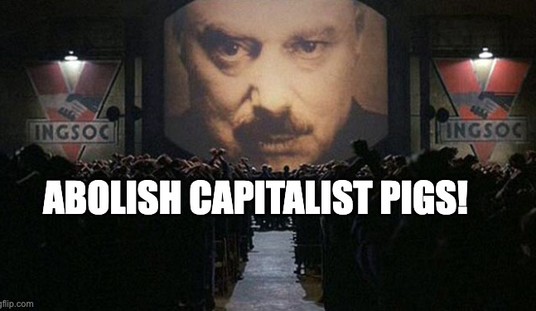Next week, voters in Massachusetts will be deciding on more than who the next President will be. Their ballots will include “Question 2.” That’s a referendum on whether or not the state will follow in the path of Maine to adopt ranked-choice voting. One group has been flooding the airwaves and people’s mailboxes with promotional material attempting to convince everyone to support this radical change. The Yes on 2 Committee has been driving this frenzy of advertising and activism and they’ve poured a ton of money into it. But the Boston Globe has revealed what should be a very telling detail about this “movement” taking place in the Bay State. Of the nearly ten million dollars that Yes on 2 has spent, nearly all of it came from out of state. And beyond that, it was largely from a scant handful of very wealthy liberal donors. The one leading the charge is a Texas billionaire who is a former energy hedge fund manager and Enron trader, named John Arnold.
“Houston,” the billionaire wrote of his hometown, “should aim to lead the way in bringing it to Texas.”
Eighteen months later, it’s voters in Massachusetts and Alaska — not Texas — weighing whether to push into a new frontier of voting this November. It’s also still Arnold helping drive the case for why they should.
Arnold and his wife, Laura, are among a network of wealthy out-of-state donors helping fuel ranked-choice voting ballot initiatives in Massachusetts and beyond, by seeding local committees with millions of dollars and, in the Arnolds’ case, buttressing research on the system’s potential impact.
When we talk about the influence of “out of state money” in local races, referendums, etc., we’re usually cherry-picking some wealthy activists or dubious organizations who kick in as part of some broader push in support of a given candidate or issue. But when it comes to the ranked-choice voting question in Massachusetts, that’s not the case at all. This isn’t some local, grassroots effort getting a “boost” from the outside.
Virtually all of the advertising for this ballot referendum came from the Yes on 2 Committee. It’s added up to $9.8 million. Of that total, $3.4 million came from the Arnolds and their lobbying group created specifically to do this. One of Rupert Murdoch’s daughters-in-law, Kathryn, kicked in another $2.5 million in just the past month. Her Unite America group put in another $445,000. Of that $9.8 million dollar total, only 19 sources, the majority of which are from outside Massachusetts, accounted for $9.2 million. Of the remaining $600K that actually came from within the state, $450,000 came from Michael Porter, a Harvard University professor.
In other words, of the nearly ten million dollars that’s been spent trying to cajole Massachusetts voters to accept this ranked-choice voting scheme, only $150,000 of it might potentially have come from random state residents who actually think it’s a good idea. And the vast, vast majority of it came from a handful of activists that don’t even live there. The same situation is playing out in Alaska, where a similar measure is on the ballot. And in that state, it’s the same list of names I provided above flooding virtually all of the money into this effort.
Shouldn’t that be telling the voters something? How good of an idea is this for Massachusetts if, even after all of this media saturation, almost nobody in the state is willing to donate to the cause and they have to bring in all their money from these other people? The obvious problem is that the opposition to a ballot referendum like this doesn’t exactly excite enough people to go out and fight against it with equal intensity. So many of the voters will go to the polls only knowing the sunny spin that these interlopers have put on the story.
Ranked-choice voting in Maine already overturned one congressional race during the first time it was used. You won’t be surprised to learn that a Republican incumbent who garnered the most votes on election day wound up having his admittedly narrow victory stolen when the new system began turning over nearly all of the votes for the more wacky third party candidates to his Democratic opponent. And the reality of ranked-choice voting is that every one of those people who voted for the non-viable candidates was allowed to vote twice. Or even three times. Their initial votes were tossed out until their final choice for a viable candidate was entered. None of the people who voted for the viable candidates was given the option of changing their vote.
This system stinks on ice. As many people can run for any office as wish to. The public decides who is or isn’t a strong candidate. Then we hold an election and the person with the most votes is supposed to win. If there’s any sort of “do-over,” it should be a runoff where everyone has the chance to vote a second time. But thanks to massive infusions of outside money, both Massachusetts and Alaska may soon follow Maine down this dangerous and frankly undemocratic path.








Join the conversation as a VIP Member